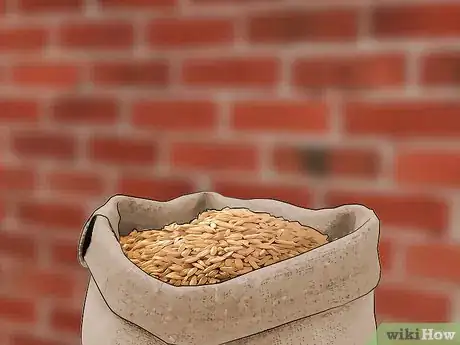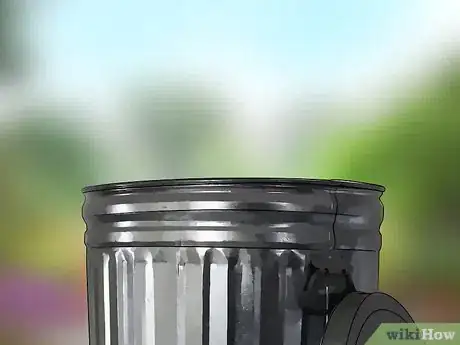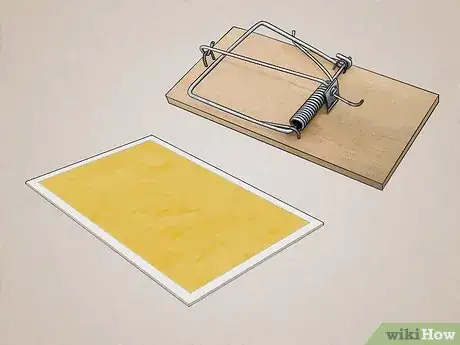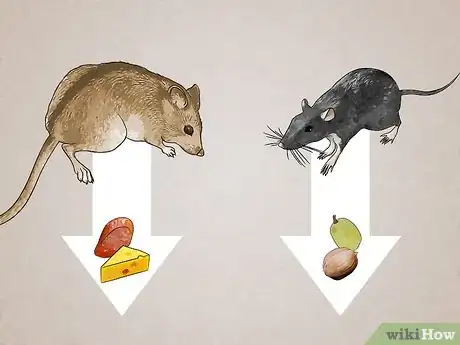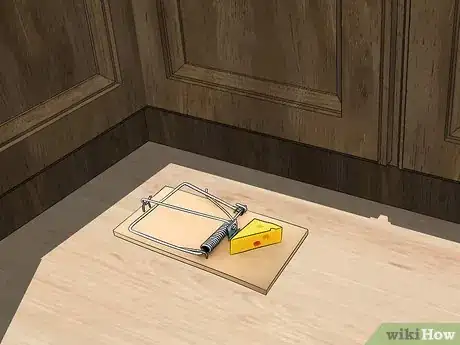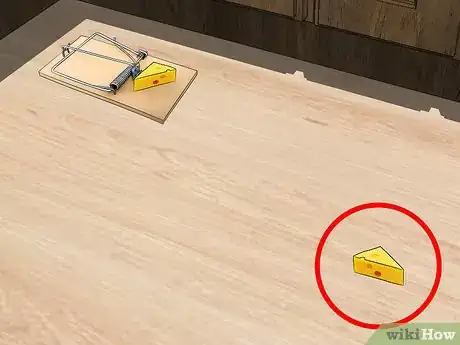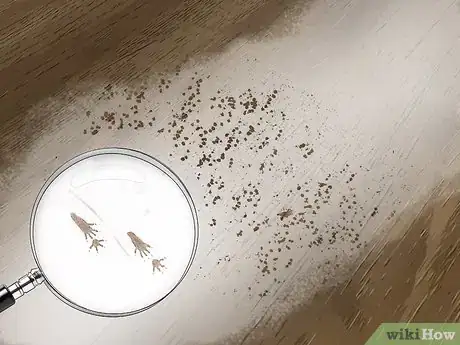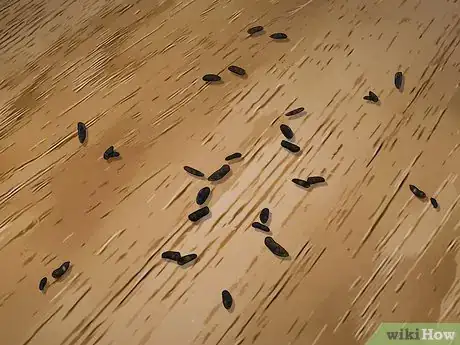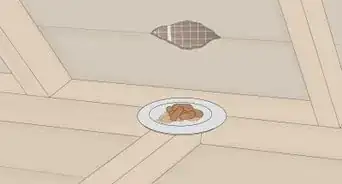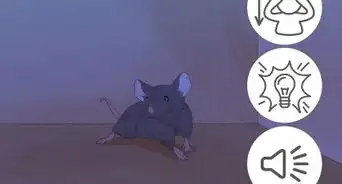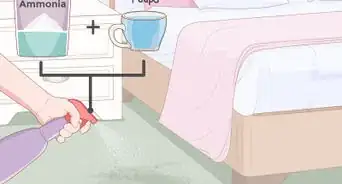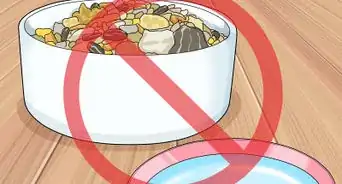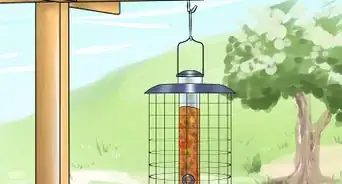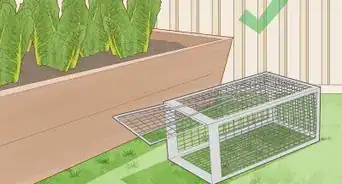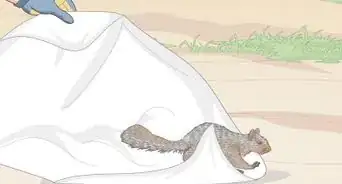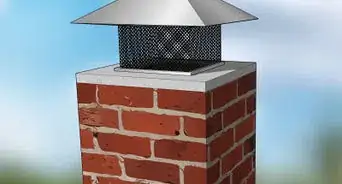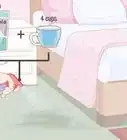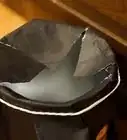This article was co-authored by Joshua Bloom. Joshua Bloom is a Pest Control Specialist and the Vice President of Operations of Standard Pest Management, a pest control company based in New York City. He has over 20 years of experience in the pest control industry and specializes in commercial and large facility pest control management. Standard Pest Control also specializes in ant, bed bug, cockroach, fly, and rodent control. Joshua is licensed by the NYSDEC (New York State Department of Environmental Conservation) for termite control.
There are 18 references cited in this article, which can be found at the bottom of the page.
This article has been viewed 44,667 times.
When attempting to rid your home of unwanted rodents, there's one thing you should keep in mind. Rats are scavengers. They’ll eat just about anything they can get their tiny hands on, whether that's a creamy slice of cheese or a stinky sack of garbage. Luckily, you can use this natural instinct to your advantage. In this article, we'll teach you how to attract and lure rats out of their hiding spots, and all you need is something smelly and a few traps.
Steps
Attracting Rats
-
1Leave some food sitting out. Rats aren't picky eaters—you can use just about any type of edible item as rodent bait, including meats, cheeses, fish, moldy bread, and produce that’s past its prime. Sweet offerings like fruit are among their favorites, particularly berries.[1]
- Rats prefer foods with strong odors, which they use to sniff out a meal. For this reason, spoiled items may be more effective for drawing them out than fresh ones.
-
2Entice rats with grains and seeds. Set out an open sack of flour or bucket of rotting feed. Grains, nuts, and other plant-based nibbles provide rats with a lot of energy, which is why it’s no coincidence that they can often be found in places like pantries and storage sheds.[2]
- It’s not uncommon to spot rats lurking near bird feeders or bags of grass seed.
Advertisement -
3Give outdoor rodents access to your garbage. If you have an overflowing trash can or dumpster outside, you may not need to do anything special to whip a community of hidden rats into a frenzy. The mixture of rotting food items in the average waste receptacle is like a buffet for a hungry rodent.[3]
- Let your trash sit out for an extra day or two before having it hauled off so it’s extra smelly.
- Your garbage will become a rat magnet in the sweltering summer months, when the heat speeds decomposition.
-
4Look for rats around leaf and compost piles. Rake the scattered leaves, twigs, and weeds from around your property into mounds and wait for the furry invaders to pour in. Rats often seek shelter in these places or make off with small pieces of debris to build their nests.[4]
- Situate leaf piles and compost heaps next to the tree line or close to dark or confined spaces. Rats are more likely to venture into these areas than those that are out in the open.
-
5Employ a chemical rat attractant. Squeeze a few drops of rat attractant around the area where you want to lure and trap rats. These products use natural compounds to mimic the scent of rat saliva. Any rats that happen to be passing by will pick up on the smell and think there’s something edible nearby.[5]
- You can buy rat attractant from most pet stores, or in the pest control aisle of your local home improvement center.
- A little bit of rat attractant goes a long way. Hints of the chemical will make nearby rodents curious, but too much may actually repel them.
Baiting Rat Traps
-
1Buy a set of rat traps. There are many different varieties of traps available, from lethal rat-zappers and sticky traps to humane contraptions like spring-loaded cages. The type of trap you select will depend on the severity of the infestation and your attitude towards killing.[6]
- You should find an extensive selection to look over at most hardware stores, home improvement centers, and gardening shops.
- If you’re not sure which type of trap would work best for a given space, ask a certified pest control specialist for a recommendation.
-
2Pick up enough traps to keep unwanted rats from escaping. As a rule, you should plan on laying out more traps than you think you realistically need. The majority of traps are only designed to catch a single rodent at a time, which means you'll need quite a few to put a stop to a horde of rampant rats.[7]
- If you're contending with a full-blown infestation, you may need as many as a dozen or more traps to get the job done
-
3Situate the traps near possible entry points. Don't concentrate all your traps in one area. Instead, place one or two around each individual opening where you suspect that rats might be getting in. This will minimize the chances of others sneaking by unscathed.[8]
- Keep the traps in plain sight to make it easy for the rats to find their way in.
- Don't forget to make the other people inhabiting the space aware of the presence of the rat traps.
-
4Choose the right bait. Not all rats share the same diet. Brown rats, the species that most commonly turns up in and around homes, will eat everything from sliced hotdogs to leftover candy. By contrast, black rats are herbivores, and will only risk exposure for fruits, nuts, and grains. To spring a successful trap, you’ll need to know which sort you have hanging around.[9]
- A savory plant-based food like peanut butter will be your best bet when you’re not sure what type of rat you’re dealing with.
- Brown rats are also known as Norway rats, gray rats, wharf rats, and sewer rats. Black rats are variously referred to as house rats, ship rats, and roof rats.[10]
-
5Bait your traps with food instead of poison. Avoid baiting your traps with toxic chemicals unless absolutely necessary. The smallest trace of rat poison can be extremely dangerous to have around your home, especially if you have pets or small children. Even if it works, the chemicals will still be present in the dead rat, which will only become more of a hazard as it decomposes.[11]
- Though it requires more patience, eliminating rats one at a time using lethal or nonlethal traps is ultimately the safer and more effective way to go.
- If you or someone in your home is accidentally exposed to rat poison, call your local Poison Control center and follow the first aid instructions laid out on the product label.[12]
-
6Place some bait just outside the trap. Food that’s sitting out in the open is easier to see. Leaving a few pieces where they’re easy to grab will also motivate the rats to wander into the trap in order to get more.
- Cut your bait of choice into thin strips or small crumbs so that they can be eaten quickly. Cautious rats might attempt to drag bigger chunks back to their nests or nibble around the edges from a safe distance.
-
7Use the same bait consistently. Rodents are suspicious of objects they haven’t encountered before. Once they develop a taste for something, however, they’ll keep coming back for more. For this reason, it’s a good idea to stick with one or two items rather than continuously switching them up. In particular, consider baiting the traps with a food that you already know the rats are eating.[13]
- Don’t give up on a particular food or lure if it doesn't work immediately. It may take a few days for the rats to work up enough curiosity to sample it.
-
8Seal up any entryways to keep the rats out. To keep rats from getting back into your home, be sure all of your doors close flush to the ground, and install rodent-proof door sweeps if they don't. Seal up any sewer caps, and check any base or ground-floor windows for holes or gaps.[14]
- Also, keep trash away from the exterior of your home.
Signs of Rats
-
1Keep an eye out for tracks. Survey the ground around your home and the places where you’ve left your bait for sets of tiny footprints. Scurrying rats leave behind four-toed tracks with their front feet, while the tracks from their back feet resemble miniature human hand prints with five digits.[15]
- It may help to cover infested areas with a light dusting of flour or salt. Not only will this make the tracks easier to see, but it also happens to be quite the tasty treat for a rat.
- Be on the lookout for long, linear marks from “tail drag” as well.[16]
-
2Learn to identify droppings. Rat pellets range in size from 1⁄2–1 inch (1.3–2.5 cm) long and are most often a dark gray or black color. You’ll typically spot them where there’s food or nesting materials to scavenge. The more droppings you come across, the more serious a rat problem you have on your hands.[17]
- Dried rat feces can carry diseases that are transmitted through particles in the air, so be sure to safely dispose of droppings as soon as you discover them. Always wear rubber gloves and cover your nose and mouth with a facemask or respirator while cleaning up.[18]
-
3Inspect for damage around possible entry points. Scratches, gouges, and small rounded holes are all signs that may point to a possible rodent infestation. Other potential clues include teeth marks and dark smudges that are created when rats rub up against a surface with their greasy coats.[19]
- Most of these marks will be concentrated around places where rats tend to find their way inside, like gutters, crawl spaces, eaves, and window casings.[20]
- Structural damage coupled with the presence of droppings or stray nesting materials is a sure sign that there are rats afoot.
-
4Listen for scratching, scampering, and other sounds of movement. Determined rats will claw, scrape, dig, and chew in order to gain access to a structure. The noises they make are soft and persistent, and may sound like they’re coming from behind a wall, beneath the floor, or inside the ceiling. If your hearing is especially sharp, you may even be able to detect an occasional squeak.[21]
- You’re likely to overhear the most disturbances at night, when rats set out to hunt for food.
Expert Q&A
Did you know you can get expert answers for this article?
Unlock expert answers by supporting wikiHow
-
QuestionHow do you lure a rat out of hiding?
 Joshua BloomJoshua Bloom is a Pest Control Specialist and the Vice President of Operations of Standard Pest Management, a pest control company based in New York City. He has over 20 years of experience in the pest control industry and specializes in commercial and large facility pest control management. Standard Pest Control also specializes in ant, bed bug, cockroach, fly, and rodent control. Joshua is licensed by the NYSDEC (New York State Department of Environmental Conservation) for termite control.
Joshua BloomJoshua Bloom is a Pest Control Specialist and the Vice President of Operations of Standard Pest Management, a pest control company based in New York City. He has over 20 years of experience in the pest control industry and specializes in commercial and large facility pest control management. Standard Pest Control also specializes in ant, bed bug, cockroach, fly, and rodent control. Joshua is licensed by the NYSDEC (New York State Department of Environmental Conservation) for termite control.
Pest Control Specialist
-
QuestionDo you have any top tips on what to use to attract rats and how to do so?
 Joshua BloomJoshua Bloom is a Pest Control Specialist and the Vice President of Operations of Standard Pest Management, a pest control company based in New York City. He has over 20 years of experience in the pest control industry and specializes in commercial and large facility pest control management. Standard Pest Control also specializes in ant, bed bug, cockroach, fly, and rodent control. Joshua is licensed by the NYSDEC (New York State Department of Environmental Conservation) for termite control.
Joshua BloomJoshua Bloom is a Pest Control Specialist and the Vice President of Operations of Standard Pest Management, a pest control company based in New York City. He has over 20 years of experience in the pest control industry and specializes in commercial and large facility pest control management. Standard Pest Control also specializes in ant, bed bug, cockroach, fly, and rodent control. Joshua is licensed by the NYSDEC (New York State Department of Environmental Conservation) for termite control.
Pest Control Specialist
Warnings
- Keep in mind that leaving rotting food and garbage lying around can also pose potential health risks to humans.⧼thumbs_response⧽
- Take the proper safety precautions anytime you’re handling rats. There’s a chance that you could contract a serious disease if you’re bitten or exposed to their droppings.⧼thumbs_response⧽
Things You'll Need
- Various food items
- Chemical rat attractant
- Rat traps
- Rubber gloves
- Breathing mask or respirator
References
- ↑ http://www.victorpest.com/articles/what-food-sources-attract-rodents
- ↑ http://wildliferemovalusa.com/ratattraction.html
- ↑ http://www.publichealth.lacounty.gov/eh/docs/Specialized/Vector_Management/attractRatsMice.pdf
- ↑ https://www.growveg.com/guides/how-to-keep-rats-out-of-your-compost/
- ↑ https://www.lowes.com/n/how-to/get-rid-rats-mice
- ↑ https://www.treehugger.com/green-home/7-humane-solutions-rat-and-mice-infestations.html
- ↑ https://www.doyourownpestcontrol.com/trapping_rats.htm
- ↑ https://www.doyourownpestcontrol.com/trapping_rats.htm
- ↑ http://www.victorpest.com/articles/15-rat-trapping-tips
- ↑ http://animals.mom.me/different-kinds-rats-4040.html
- ↑ https://www.angieslist.com/articles/can-rat-poison-kill-you.htm
- ↑ http://saferodentcontrol.org/site/risks-for-children/
- ↑ Joshua Bloom. Pest Control Specialist. Personal interview. 8 May 2020.
- ↑ Joshua Bloom. Pest Control Specialist. Personal interview. 8 May 2020.
- ↑ http://www.pestdetective.org.nz/clues/footprints-and-tracks/paws/
- ↑ https://www.doyourownpestcontrol.com/rodent_tracks.htm
- ↑ http://www.wildlife-removal.com/ratvsmousepoop.html
- ↑ https://www.cdc.gov/rodents/diseases/direct.html
- ↑ http://www.publichealth.lacounty.gov/eh/docs/Specialized/Vector_Management/attractRatsMice.pdf
- ↑ http://www.attic-rat.com/entryholes.html
- ↑ https://www.angieslist.com/articles/signs-your-home-infested-rats-or-mice.htm

